Deconstructing DeSantis' questionable claims about fentanyl, Florida's decline in OD deaths
- Oops!Something went wrong.Please try again later.
Drug overdose deaths hit a new record nationwide last year amid the ongoing fentanyl crisis, but Florida was a different story.
Overdose deaths dropped in 2022 in America's third most populous state, a sign of hope in the battle against the devastating opioid epidemic.
Gov. Ron DeSantis has been eager to take credit for Florida’s declining overdose deaths as he runs for president, and has pointed to a state program he launched as key in reducing deaths.
Yet the story DeSantis tells claiming his administration is turning the tide on one of the most pernicious problems facing Florida is implausible.
While overdose deaths declined statewide in 2022, the program that DeSantis touts wasn't announced until August of that year and only for 12 counties, including five that actually saw the number of overdose deaths go up in 2022.
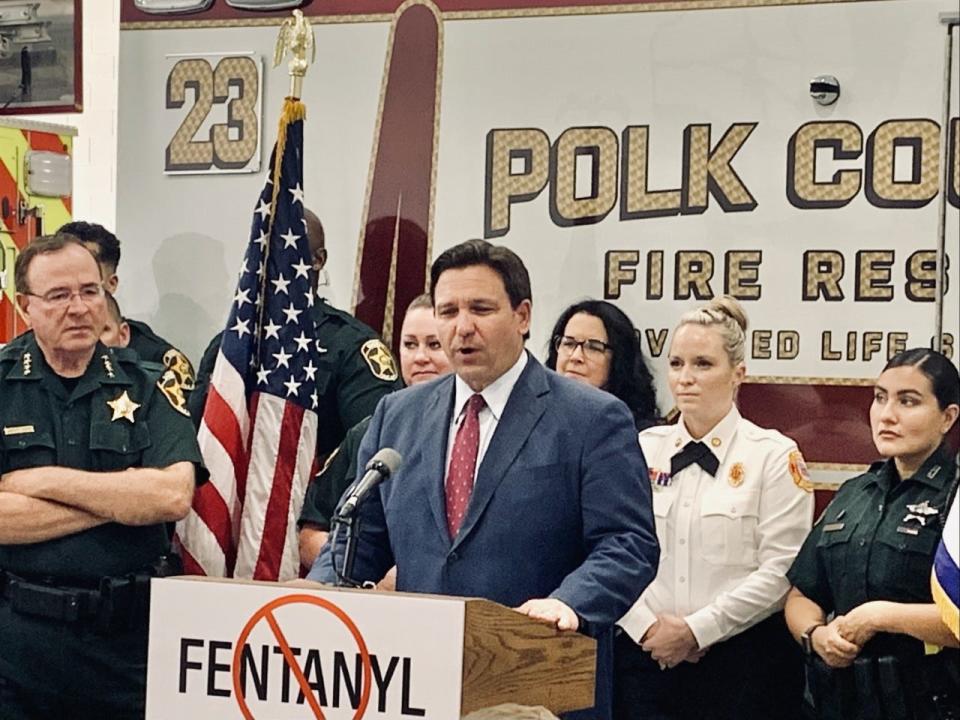
Many Florida counties that saw a decline in overdose deaths aren't among the initial 12 in DeSantis’ program, and others appear to have rolled it out too late to significantly influence the 2022 death total.
The governor also has touted Florida as the only state where overdose deaths declined year-over-year since he launched his program, yet data shows many states saw overdose deaths decline in 2022.
More than 100,000 Americans died of drug overdoses last year, according to the CDC, and most were opioid related.
Political leaders, law enforcement and health experts have spent years trying to ease the opioid epidemic, only to see it morph from prescription pills to illicit street drug and get worse – and even deadlier.
Fentanyl top political issue
Driving the latest spike in deaths is fentanyl, a cheap synthetic opioid that can kill in tiny amounts. Fighting the flow of fentanyl has become a top political issue.
DeSantis has mostly focused on the law enforcement side, attracting attention for his provocative comments about shooting drug smugglers “stone cold dead” at the border.
Yet opioid experts say it is extremely difficult to stop fentanyl from coming into the U.S., and that helping those who are struggling with addiction also is critical.
Many conservatives are embracing new drug treatment and opioid harm reduction measures, DeSantis among them. But some experts believe his efforts have come too late and still aren’t going far enough, and that the governor shouldn’t take credit for Florida's decline in overdose deaths.
“I think grassroots advocacy and education efforts with policymakers (are) really the driving force” behind the decline in deaths, said Crister Moynahan, the chief program officer for Rebel Recovery in Palm Beach County.
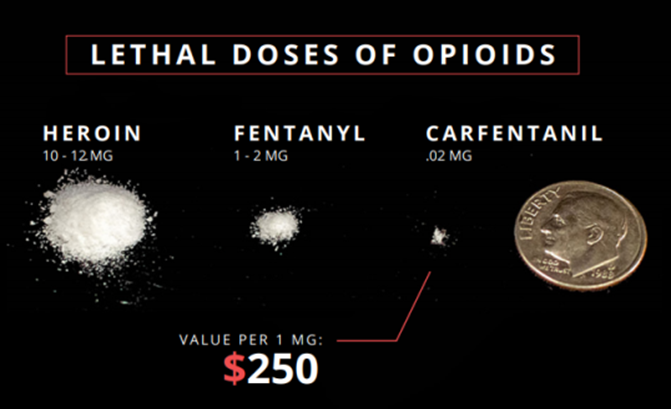
A changing epidemic
The opioid epidemic had been raging for years when DeSantis took office in early 2019, but lawmakers had made progress reining in prescription pain pills, which once drove the problem.
The Florida Legislature created a new registry for opioid prescriptions to stop doctor shopping and limited many pain pill prescriptions to either a three-day or seven-day supply, among other measures.
Deaths caused by some of the most common prescription opioid pills began to decline, according to the state Medical Examiners Commission.
Deaths from fentanyl soared, though. In 2021, fentanyl was listed as a cause of death in 5,791 fatal overdose cases in Florida, up from 1,390 in 2016, according to the Medical Examiners Commission. Deaths caused by fentanyl analogs – which act like fentanyl but have different chemical formulas – also spiked.
Fentanyl drove a startling 62% increase in drug overdose deaths in Florida during DeSantis’ first term as governor, according to CDC data.
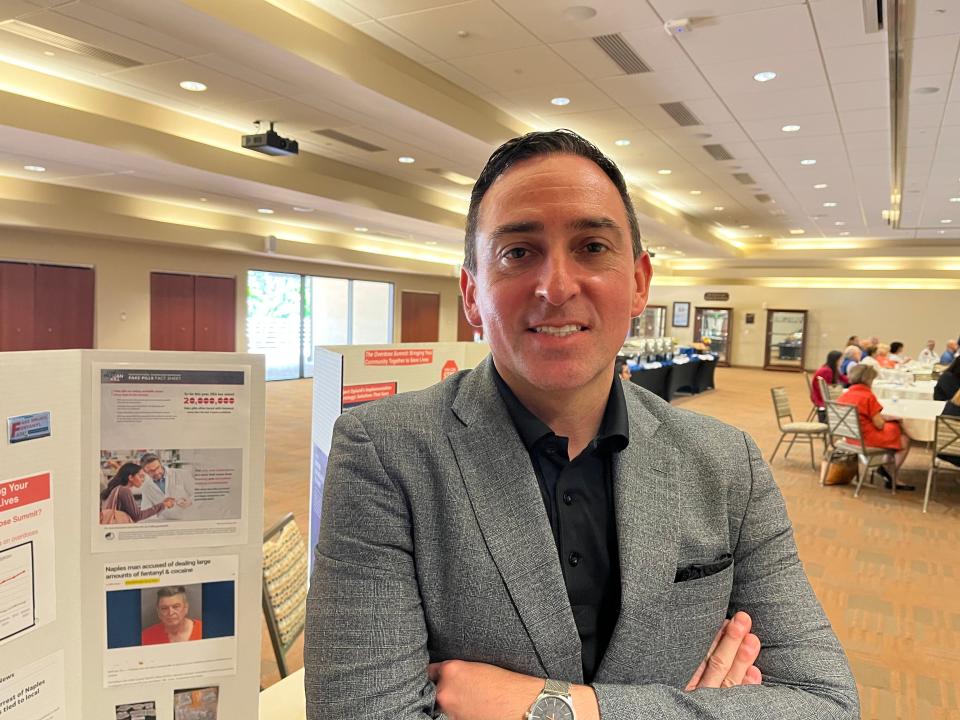
“The deaths just exploded upward,” said Andrae Bailey, the founder of Project Opioid, a Florida-based advocacy group.
DeSantis promised to tackle the opioid issue when he first ran for governor. A few months after taking office, he signed an executive order re-establishing Florida’s drug control office, which had been disbanded by his predecessor, and creating the Statewide Task Force on Opioid Abuse.
The task force met seven times through April 2020 and issued a final report calling for a comprehensive opioid strategy in Florida.
State Sen. Jim Boyd, R-Bradenton, served on the task force and has taken the lead on a series of bills aimed at combating the opioid crisis. He believes DeSantis deserves credit for making progress on the issue: "I think he’s been as active and interested in it as any of the rest of us," Boyd told the USA TODAY Network.
It took years, however, to pass legislation and create a new state program implementing some of the key task force recommendations.
At the same time, the COVID-19 pandemic helped drive the opioid epidemic in Florida and across the nation to new heights. People were stuck at home and drug abuse spiked.
Taking action on opioids
There were nearly 2,000 more drug overdose deaths in Florida in 2020 – when the pandemic started – than in 2019, according to CDC data.
That staggering 37% increase in deaths over just one year amounted to a health crisis within a health crisis.
Yet it wasn't until the spring and summer of 2022 – more than two years after the Opioid Task Force issued its final report – that DeSantis signed a pair of laws and created a new state program implementing some of its recommendations.
In April 2022, the governor approved legislation sponsored by Boyd aimed at increasing access to overdose reversal drugs, such as Naloxone, sold under the Narcan brand name. In May of that year, he signed a bill increasing penalties for dealing fentanyl.
Then, in August 2022, the governor unveiled his CORE program, standing for Coordinated Opioid Recovery Network. CORE is modeled on a program developed in Palm Beach County, an epicenter of the opioid crisis in Florida.
Palm Beach County officials developed a more seamless system that allowed various agencies to coordinate their opioid response efforts. They established an Addiction Stabilization Unit at a West Palm Beach hospital to treat overdose patients and connect them with services, such as counseling and housing.
“This is a very complex illness, it requires a lot of hand holding," said Dr. Belma Andric, the vice president and chief medical officer for the Health Care District of Palm Beach County.
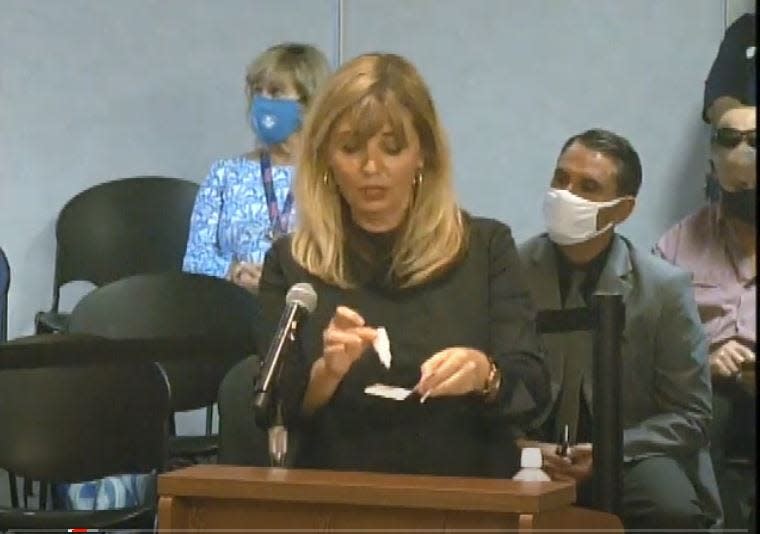
DeSantis traveled to Brevard County, which had a high overdose death rate, in August of 2022 to announce that CORE would be implemented there, and in 11 other counties.
Presidential campaign pitch
On the presidential campaign trail, DeSantis has pointed to CORE as key to reducing drug overdose deaths in Florida.
"Look, the problem of addiction and stuff, it's very difficult," DeSantis said on Oct. 13 in Merrimack, New Hampshire. “In Florida, we actually created a Coordinated Opioid Response Network throughout our state. We've got probably now 25 to 27 of our counties, most of the populous counties, but it recognizes that someone goes to the hospital (with an) overdose, they just get discharged.
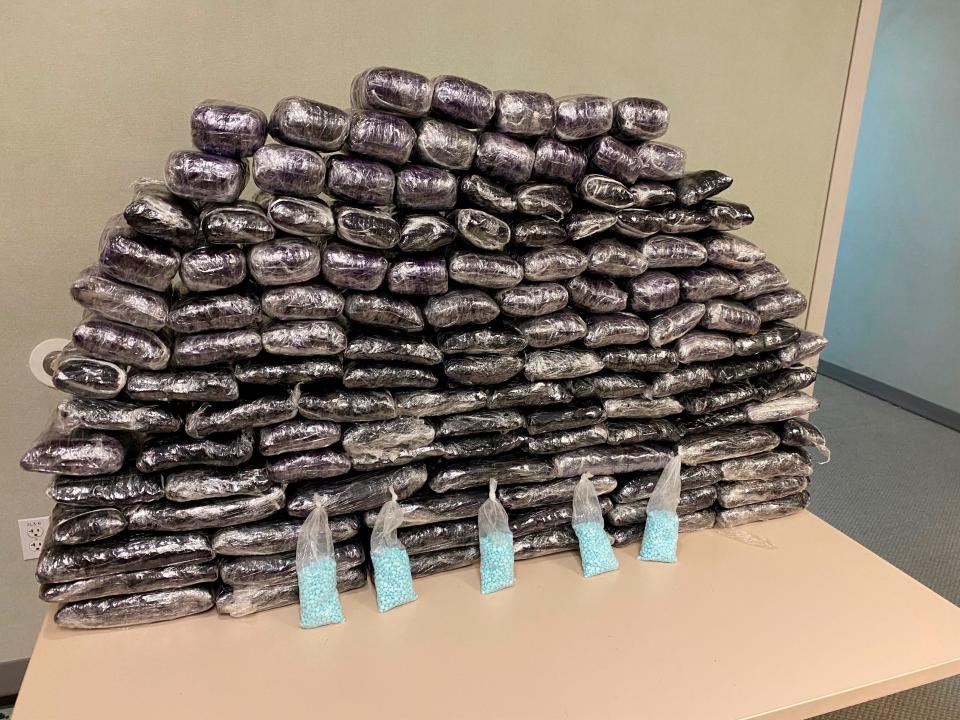
"They're likely going to relapse at that point if they have nothing else kind of going for them," he went on. "So we have an ability to link them with services and treatment, and the result has been (that) the relapse rate of people that have gone through that program is under 10% and we’re the only state in the country that had a decline in overdose deaths year-over-year since we put that program in place.”
The governor made similar comments during an event in Tampa on Oct. 5.
“We’re the only state in the country, I believe, or one of the few, where we’ve actually had a decline in the overdose rate in the last year, and that’s because we have a program we put in place called the Coordinated Opioid Response Network ... and it’s worked,” DeSantis said.
It's not clear what data DeSantis is using to assert Florida is the only state that saw overdose deaths decline. His campaign and administration did not respond to inquiries about what the claim is based on.
Nearly two dozen states saw drug overdose deaths decrease in the 2022 calendar year, according to CDC data. The 2022 data is provisional, but mostly complete.
The overdose death data for the 12-month period since CORE was announced in August 2022 is substantially incomplete (it can take months to get toxicology results) and can't be compared to the 12 months before CORE was announced.
Deaths drop in Florida
While Florida isn't the only state that saw overdose deaths decline, it did see one of the largest decreases.
Florida officials say the state led the nation with the greatest reduction in drug and alcohol related deaths, providing a chart culled from CDC vital statistics data in August showing 334 fewer deaths in 2022 when compared with 2021.
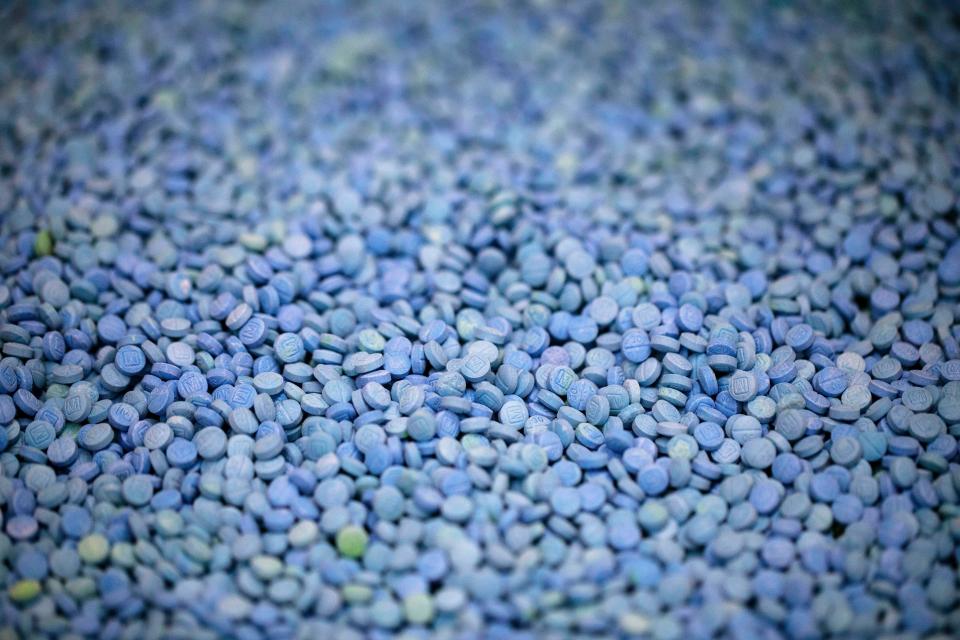
The provisional 2022 data provided by the CDC this month shows 219 fewer drug overdose deaths in Florida than in 2021. The data doesn't include deaths caused by alcohol.
Using either set of numbers, though, many states saw deaths decrease in 2022, and many saw a larger percentage decrease than Florida. Narrowing the scope to just opioid overdose deaths, instead of all drug deaths, also shows Florida is among a large group of states that saw a decrease in 2022.
DeSantis' claim that CORE is responsible for reducing drug overdose deaths raises questions, because deaths declined in Florida in 2022 and CORE didn’t exist for much of that year. When it did launch, it was only in 12 counties.
DeSantis announced CORE would roll out in two phases. Brevard, Clay, Duval, Escambia, Gulf, Manatee, Marion, Pasco and Volusia counties went first, followed by Pinellas, Manatee, Citrus, Duval and Flagler.
Of those 12 counties, six saw overdose deaths decline in 2022 and five saw deaths increase based on provisional numbers, while data isn’t available for Gulf County, according to the CDC.
DeSantis claims CORE has expanded to more than two dozen counties, but a map on the CORE website still only shows it operating in the initial 12 counties and state health officials did not respond to a question about which counties the governor is referring to when he talks about an expanded program.
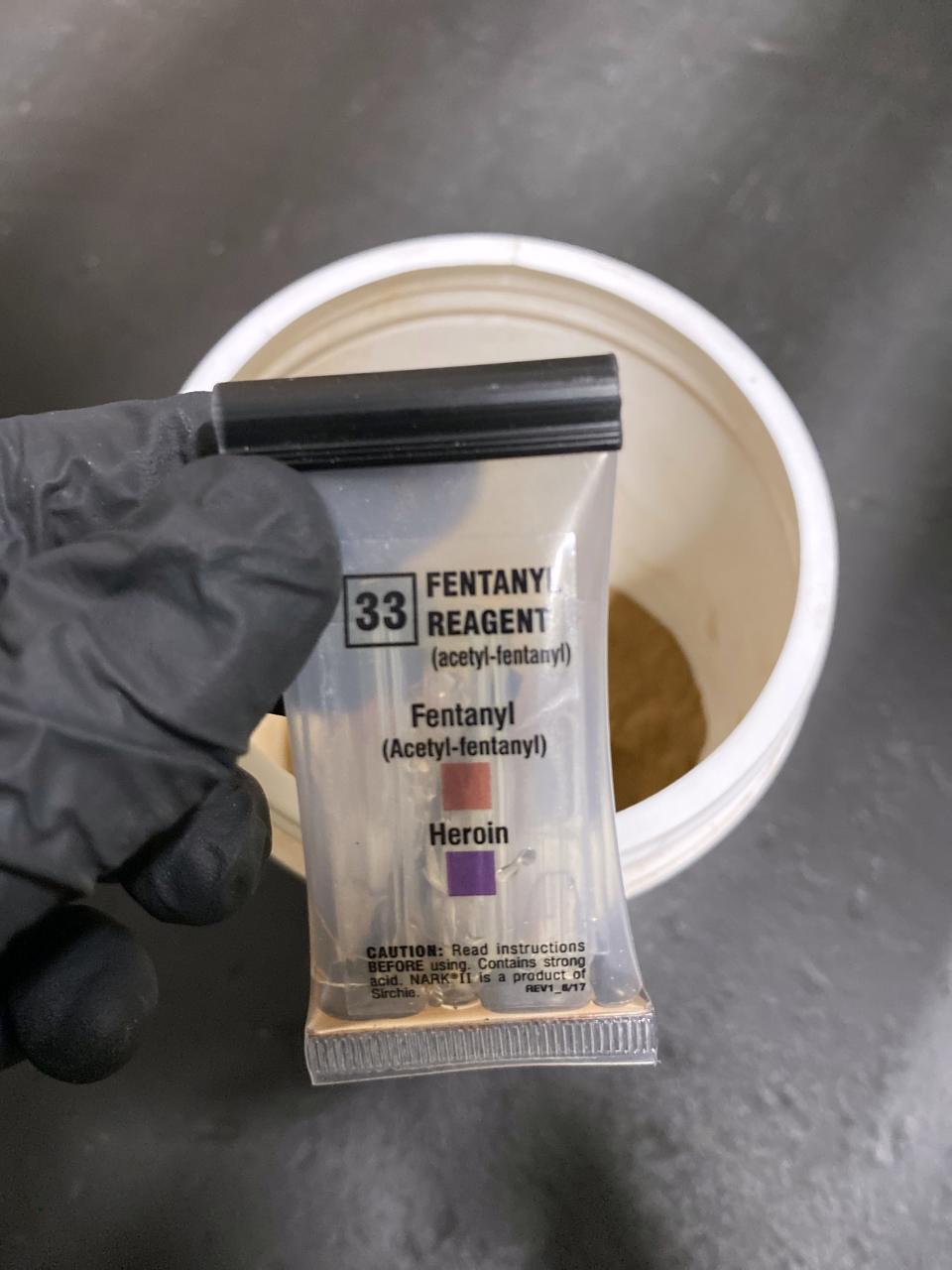
Some of the Florida counties that saw the largest decline in overdose deaths in 2022, such as Sarasota, Orange and Broward, weren't among the 12 initial CORE counties. Overdose deaths declined in 19 counties in 2022 that aren't among the 12, according to CDC data.
Additionally, while CORE was announced in August of 2022, it didn’t get established in at least one key county until months later. Brevard County saw the largest decline in overdose deaths of any Florida county, with 166 fewer deaths in 2022 than in 2021.
Florida Department of Health Deputy Chief of Staff Weesam Khoury said in an email that "Brevard's CORE Network welcomed their first walk-in patient seeking help with their substance use disorder in November 2022."
But Laura McCarthy, the executive director of Brevard Recovery Fest, believes it wasn't until the spring of 2023 that CORE really got off the ground there.
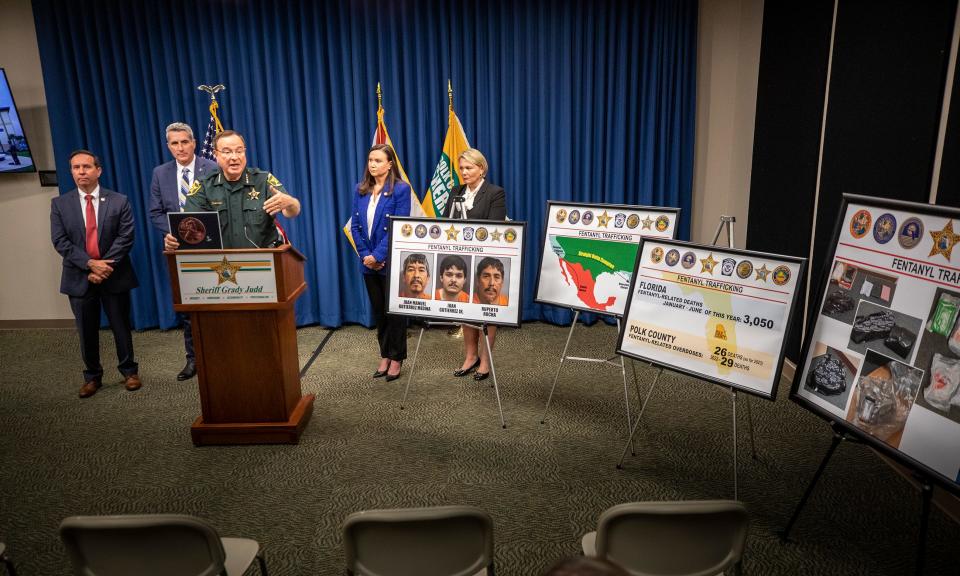
McCarthy is an addiction counselor who spent 10 years working at Circles of Care, the treatment center that administers CORE in Brevard. She supports CORE, but doesn’t believe it was a factor in Brevard’s startling decline in overdose deaths in 2022. “It wasn’t in place,” she said.
Others believe CORE may have helped reduce overdose deaths in the second half of 2022 in Brevard and elsewhere. Bailey noted some CORE counties saw significant reductions in deaths.
“I would not give CORE all the credit for that in 2022, but I think having that come in at the tail end, that’s another piece," said Stanley Brizz, executive director of the Brevard Prevention Coalition.
A variety of factors likely contributed to overdose deaths dropping in Florida in 2022, including the COVID pandemic waning, better awareness of fentanyl's dangers and efforts to promote a wider range of effective substance abuse treatment programs.
Many communities also have begun aggressively distributing Naloxone, which can revive someone experiencing an overdose. Experts universally point to broader availability of that medication as critical to more people surviving overdoses, and say much of that happened at the local level.
'Attacking the opioid crisis from every angle'
DeSantis’ campaign did not respond to a request for comment about the questions surrounding how he is portraying his record on opioid issues, but the governor’s office, and representatives from two state agencies that oversee drug treatment and prevention programs, strongly defended his approach.
Department of Children and Families Press Secretary Miguel Nevarez said his agency has made progress implementing the Opioid Task Force’s recommendations.
“The state has made strategic funding investments under the governor’s tenure to enhance the array of services and strategies mentioned in the report,” Nevarez said.
![A chart showing the rise in fentanyl deaths, right, sits on a easel as Secretary of the Department of Children and Families, Shevaun Harris, left, talks with Florida Surgeon General Dr. Joseph Ladapo, right, after a press conference Thursday. They were joined by local leaders for a news conference at the auditorium at the Florida Department of Health building in Ocala, FL, Thursday morning, October 13, 2022. They discussed the state's CORE program or Coordinated Opioid Recovery, a network of addiction care. Marion was among the first seven counties to get this program, which helps people with opioid addiction. [Doug Engle/Ocala Star Banner]2022](https://s.yimg.com/ny/api/res/1.2/C580HJhhqvhgn634UKIQhw--/YXBwaWQ9aGlnaGxhbmRlcjt3PTk2MDtoPTYxMQ--/https://media.zenfs.com/en/herald-tribune/249fe1bbc2a6565bd5430f117b7e83d1)
Some of CORE's strategies weren't just accomplished through that program, he noted, pointing to “policy and funding adjustments throughout the system."
Nevarez and Khoury also highlighted state efforts to increase Naloxone access, which was emphasized in the task force report, with 318 new distribution sites over the last three years.
"Florida is attacking the opioid crisis from every angle – and we have saved countless lives to prove it," Khoury said.
'We needed it three years ago'
One thing's for sure about CORE: There is widespread support for the program. Many opioid experts see it as a positive step that will help reduce deaths going forward.
Some believe it should have happened sooner, though, and still isn’t widespread enough. “Every county should be doing it, not just some,” said Kendall Cortelyou, interim director of the School of Global Health Management and informatics at the University of Central Florida.
There are a range of views about the best strategies for tackling the opioid epidemic.
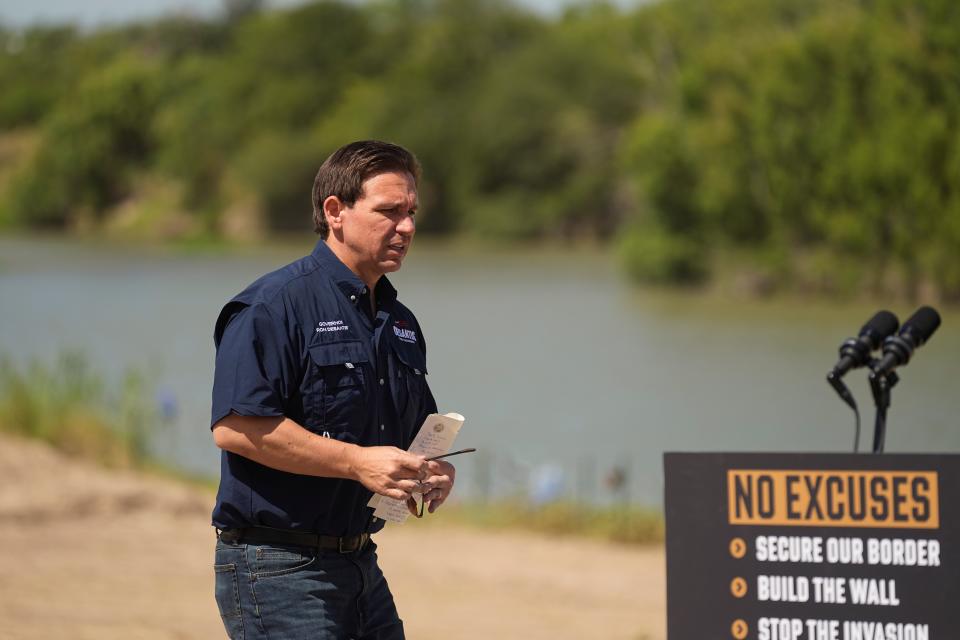
Naloxone, for example, is still viewed by some as a drug that enables risky behavior. There also still is resistance to medication-assisted treatment (MAT), which uses opiates such as Methadone and Buprenorphine to help addicts and is sometimes viewed as switching one drug for another.
DeSantis has been willing to support programs that still encounter skepticism from those who promote complete abstinence. The CORE program embraces MAT.
The governor also signed legislation this year legalizing fentanyl test strips, so drug users can test substances to see if they contain fentanyl.
Meanwhile, more than $3 billion is flowing into the state from settlements in lawsuits against prescription pain pill companies. The big influx in money, combined with better local and state policies targeting the opioid epidemic, has some experts believing the worst could be over.
Yet Cortelyou also wonders what would have happened if more had been done earlier to address the crisis.
“This opioid settlement money is wonderful... but we needed it three years ago, we needed it four years ago, before the pandemic, when things got so much worse,” she said.
“If we had a better system of care during that time, I think we would be in a much better situation now."
Help is available
If you or someone you know needs help with an addiction, call the Substance Abuse and Mental Health Services Administration's toll-free national "helpline" at 1-800-662-4357. Confidential free help is available from public health agencies to find substance use treatment and information.
This article originally appeared on Sarasota Herald-Tribune: DeSantis claims success fighting fentanyl. Here's the facts in Florida.

